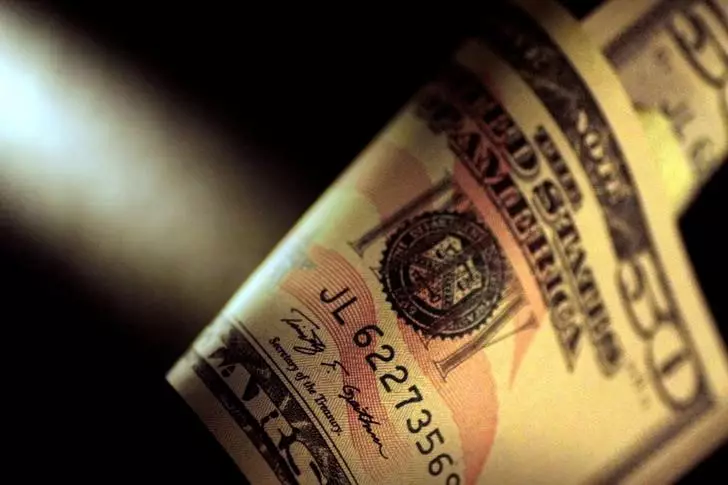The U.S. Dollar’s Fragile State Amidst Political Uncertainty and Economic Indicators

The U.S. dollar recently showcased a slight decline, as it approached a pivotal moment characterized by a closely contested presidential election. As the market opened on Tuesday, the Dollar Index, which evaluates the dollar’s performance against six major currencies, fell by 0.1%, resting at 103.655. This dip signals a considerable shift from last week when the dollar was nearing its peak since late July. The impact of an unwinding “Trump trade” can no longer be ignored, particularly in light of polling that indicates a potentially neck-and-neck battle between Donald Trump and Kamala Harris, with crucial voting set to begin.
Financial forecasts leading up to the election had heavily favored a Trump victory, as analysts pointed to his tariff and immigration policies, which are often viewed as inflationary. These factors led to a rally in both U.S. Treasury yields and the dollar itself. Analysts from ING have noted the palpable volatility reflected in the FX options market, underscoring the precariousness surrounding the election outcome. They suggest that for the dollar to extend its prior strength, we would likely need a Red Sweep—a scenario in which Trump takes both the presidency and Congress. Conversely, a win for Harris would probably weaken the dollar, suggesting that the market’s dynamics are finely balanced.
Adding another layer of complexity, the Federal Reserve’s upcoming meeting is set to attract significant attention from traders. The market has started to price in expectations of a modest rate cut of 25 basis points, a shift from the more aggressive 50-basis point reduction previously enacted in September. Investors are particularly keen to glean insights from Fed Chair Jerome Powell regarding future monetary policy direction. Recent economic data has posed questions about the resilience of the labor market, revealing potential deterioration that could sway the Fed towards a more accommodating stance.
Moreover, inflation has remained stubbornly high, complicating the Fed’s position. The delicate balancing act they face becomes pivotal, not only for the local economy but also for how global currencies are affected by U.S. monetary policy decisions.
As the dollar slipped, the euro experienced a minor rally, trading 0.2% higher against the dollar at 1.0893 after hitting a recent high of 1.0914. Despite these gains, the eurozone grapples with its own economic headwinds, notably a 0.9% decline in French industrial production in September. The mix of local fiscal challenges and the overarching uncertainty stemming from the U.S. elections places additional constraints on the euro’s upward momentum.
The potential fallout from the U.S. elections is expected to overshadow European currency movements this week. Notably, ING has raised concerns that a Trump victory, even without control of the House, might pose significant risks for the euro-dollar exchange rate by the latter half of 2025. Such a scenario could hinder global growth, thereby affecting the European Central Bank’s maneuverability around rate adjustments.
Other notable movements included the British pound increasing by 0.2%, reaching 1.2980, as markets anticipate a similar 25-basis point cut from the Bank of England shortly. Meanwhile, the Japanese yen has remained under pressure, as USD/JPY climbed slightly to 152.16, lingering near its weakest level in months. In contrast, the Chinese yuan experienced a modest increase, hinting at increased investor scrutiny surrounding fiscal stimulus initiatives expected from China’s National People’s Congress.
On the Australian front, the AUD/USD pair rose 0.5% to hit 0.6618. The Reserve Bank of Australia refrained from enacting policy changes, aligning with market expectations. However, Governor Michele Bullock’s comments suggest potential inflationary pressures that could reshape the landscape for the Australian dollar.
The U.S. dollar’s tentative state reflects a broader narrative involving both domestic political dynamics and international economic conditions. Traders and investors must navigate a landscape where political events, coupled with Federal Reserve actions and global economic indicators, collectively influence currency values. The unfolding election results and subsequent shifts in policy will likely set the tone for market sentiment in the ensuing weeks.





